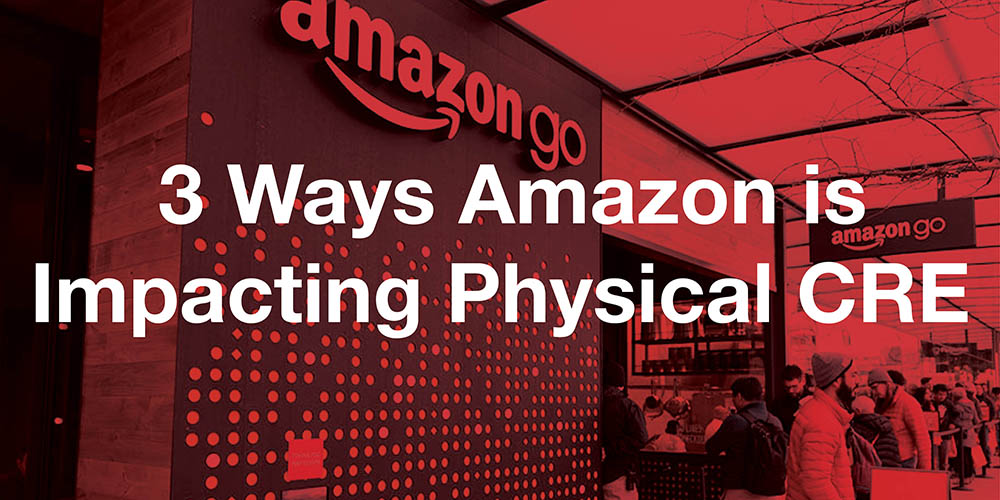Amazon Isn’t Just Online: Three Ways It’s Impacting Physical CRE
It’s no secret that Amazon is the world’s largest online retailer. And, as such, the online behemoth has significantly and forever impacted the ways that we, as consumers, buy and sell goods throughout the United States. Their massive success has driven many retailers into a panicked frenzy, trying to come up with some way to keep up with or even compete with Amazon. However, most retailers have resorted to adopting a similar (if not smaller scale) eCommerce model. In fact, the online retailer is so ubiquitous that this shift in commerce has been dubbed “The Amazon Effect.”
However, Amazon is more than just an online retailer with crazy fast shipping times. Here are 3 ways the company is impacting physical CRE, as well…
- Physical stores have been shuttering at an alarming rate
Arguably one of the most notable results of The Amazon Effect is the rate at which traditional brick and mortar stores are closing their doors for good. After all, it’s no coincidence that as the popularity of Amazon rose, more and more physical stores began to close. With more consumers getting comfortable with eCommerce and the convenience of online shopping, many are actually beginning to find the process of shopping in a physical store inconvenient and outdated.
- eCommerce technology is impacting design elements
Amazon’s eCommerce model has had a significant impact on the types of design elements businesses are looking for. Tenant expectations and the demands of investors require companies to look for space that can support eCommerce. For instance, warehouse space, while historically overlooked, has suddenly become one of the industry’s biggest “must-haves.” Today’s tenants are looking for space that can support not only today’s technology, but the technology of the future, as well.
- Amazon is dominating in more — and even new — industries
These days, there aren’t many areas of our lives that Amazon doesn’t touch. Consider your grocery shopping habits. Until recently, consumers couldn’t wrap their heads around the concept of Amazon delivering fresh, quality groceries without a local, physical presence. However, when Amazon purchased Whole Foods in 2017, this all changed. Suddenly, Amazon has more than 450 physical locations throughout the United States to deliver fresh groceries on-demand. Stay tuned to see how traditional grocery giants, such as Kroger and Walmart, respond.
Amazon and Its Impact on the Future of Real Estate
At the end of the day, it’s hard to argue with innovation. It’s hard to argue with convenience. And it’s especially hard to argue with more choices, greater convenience, and lower prices for consumers. And physical CRE is taking note. Traditional physical retailers will need to find new and better ways to keep up — or learn to get out of the way. If Amazon continues to grow at its current rate, it’s safe to assume that it will be impacting CRE trends for many years to come.




